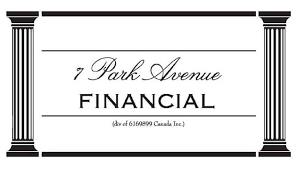|
Receivables Loan Explained: Unlock Your Business’s Cash Flow Potential
How Receivables Financing Can Transform Your Business Overnight
YOUR COMPANY IS LOOKING FOR CANADIAN FACTORING FINANCING
AND THE BEST ACCOUNTS RECEIVABLE FINANCING SOLUTION!
The Business Lifeline: How Receivables Loans Support Growth
You've arrived at the right address! Welcome to 7 Park Avenue Financial
Financing & Cash flow are the biggest issues facing business today
ARE YOU UNAWARE OR DISSATISFIED WITH YOUR CURRENT BUSINESS FINANCING OPTIONS?
CALL NOW - DIRECT LINE - 416 319 5769 - Let's talk or arrange a meeting to discuss your needs
EMAIL - sprokop@7parkavenuefinancial.com

Receivables loan transforms outstanding invoices into immediate working capital to enhance your business liquidity.
Unlock cash trapped in unpaid invoices now—boost your cash flow without the wait!
7 Park Avenue Financial originates business financing solutions for Canadian Businesses – We offer RECEIVABLES LOAN solutions that solve the issue of cash flow and working capital – Save time and focus on profits and business opportunities
INTRODUCTION
No surprise that cash flow remains king. For many businesses, the challenge of maintaining enough cash flow while waiting for invoice payments can hamper growth and affect operational efficiency.
A receivables loan is a strong solution solution. By allowing businesses to borrow against unpaid invoices due, it provides immediate cash flow relief, thus allowing your company to fund operations and grow sales and profits.
WHAT IS FACTORING FINANCE AND HOW DOES IT WORK?
Factoring Financing, also known as invoice discounting in Canada, is a lesser-known but essential part of the Canadian business financing mosaic. Increasingly it is a major source of business financing and funding from small and medium-sized companies in Canada. (We would also add that a form of factoring is utilized by many of Canada’s major corporations also)
When Canadian business owners and financial managers think of financing their accounts receivables, historically, they have thought of a bank ‘overdraft' or an ‘operating line of credit.' With today’s low rates, those facilities (when you can get them) are among the best financing facilities in Canada from the viewpoint of cost of capital.
FACTORING VS BANK LOANS - WHY CHOOSE FACTORING AS A FORM OF FINANCING?
However, many new, smaller, and even medium-sized established firms cannot meet the criteria that our chartered banks require to get such facilities in place.
This is very simply because these types of facilities require excess collateral, strong personal guarantees, and the ability to meet various ratio and covenant formulas that the banks wish to have as backup collateral to their lending decisions. That is when the factor firm can becomes your essential financing partner without bringing any debt to your balance sheet.
Unlike bank financing little or no emphasis is placed on the credit history or net worth of small business owners, and invoice factoring via a ' receivables loan ' delivers cash on your receivables within 24 hours of submitting an invoice/invoices.
That's better than waiting for your customers to pay! That's cash in your account the same day! Typically you receive 80-90% of the invoice value, with the balance paid to you when your client pays, less the ' factor discount fee'.
As your sales grow your facilities increase automatically - another major benefit of third-party a/r financing giving you access to constant cash as your sales of products and service grows. That's a difference from a more defined credit limit that might come with a traditional bank facility as your client base grows.
Your company's cash flow just increased substantially via the factoring transaction. Factoring facilities are much easier to obtain than bank financing and the time associated with applying is very quick and easy compared to bank loans.
Factoring financing or the immediate discounting of your receivables provides your firm with a greater level of borrowing against what is often your largest current and most liquid asset, your A/R.
When small business owners come to us looking for an invoice factoring facility, we are very clear that the largest challenge is not getting them that facility but getting the right facility.
The Canadian factoring landscape is littered with many firms with facilities that don’t meet their needs from a cost perspective, but more importantly, getting a facility that meets how they do business in their own industry and geography.
FACTORING COMPANIES IN CANADA
There are hundreds of small and large factoring companies in Canada – (think of it, there are only 6 or so charted banks!).
Most business owners don’t know that these firms are either tiny privately funded independents or subsidiaries of large branch operations in the U.S. and the U.K. The latter, the U.S. and U.K. firms, have brought their way of doing business into Canada, which is not always, in our opinion, what works for your firm.
Your business can choose to eliminate credit risk by using a non recourse form of financing.
Also, many Canadian business owners don’t realize that they can complement, with the right factor partner firm, their receivables with an inventory and equipment facility – in some cases, that can immediately double your available liquidity from the viewpoint of cash flow and working capital.
That becomes a long-term solution to your business capital needs. That type of facility is known as an asset-based line of credit. Talk to the 7 Park Avenue Financial team about asset-based lending.
The main challenge we see for business owners is their inability to navigate the difficult terminology and jargon of this relatively new type of financing in Canada. Therefore, business owners can be forgiven that they don’t know what the following terms mean and what impact they have on your business.
Discount rate
Advance Rate
Borrowing Base
Notification
Holdback reserve
Guess what? These terms greatly impact why you’re factoring financing and invoice discounting facility will be a success or failure for Canadian small businesses.
Discount Rate: The discount rate is the percentage fee a lender charges on the value of invoices financed through receivables financing. This fee compensates the lender for the risk and time until the invoice is paid.
Advance Rate: The advance rate is the percentage of the invoice amount that the lender immediately provides to the borrower upon approval. Typically ranging from 80% to 90%, this rate determines how much cash the borrower receives upfront.
Borrowing Base: The borrowing base is the total value of collateral, usually accounts receivable, that a lender uses to determine the maximum loan amount they can extend. It reflects the current, eligible invoices that can be financed.
Notification: Notification refers to the process by which the lender informs the debtor (the borrower's customer) that the receivables have been assigned to them, and payments should be made directly to the lender. Businesses can avoid notification by using Confidential Receivable Financing
Holdback Reserve: The holdback reserve is a portion of the invoice amount (ranging from 10% to 15%) withheld by the lender until the invoice is paid in full. This reserve acts as a safeguard to cover discrepancies or credit issues.
KEY TAKEAWAYS
- Invoice Financing Types - Understand the distinction between factoring and discounting to choose the best option for your needs.
- Eligibility Criteria - Know what makes your business a viable candidate for this type of financing, including credit terms and invoice volume.
- Benefits Offered - Immediate cash flow improvement is a key advantage, facilitating faster operational scaling and investment.
- Potential Risks - Be aware of the costs involved, including interests and fees, which can affect your profit margins.
- Financing Rates - Comparative analysis of rates provided by different lenders can ensure you get the most cost-effective deal.
CONCLUSION - FACTORING FINANCE BASICS!
Call 7 Park Avenue Financial, a trusted, credible and experienced advisor in the area of factoring financing.
Understand why this type of financing is working in Canada, and more importantly, how it can help your firm grow revenues and profits and achieve the business benefits of invoice factoring.
FAQ: FREQUENTLY ASKED QUESTIONS / PEOPLE ALSO ASK / MORE INFORMATION
What is a receivables loan?
A receivables loan is a type of business financing that uses a company's outstanding invoices (accounts receivable) as collateral. Accounts receivable financing companies advance a portion of the invoice value, providing the business with immediate cash.
Can you borrow against accounts receivable?
Yes, you can borrow against accounts receivable through an accounts receivables loan. This can be helpful for businesses with slow-paying customers or those needing a cash flow boost.
What is the difference between a loan and accounts receivable?
A key difference is ownership. With a loan, you borrow money and repay it with interest. You retain ownership of the underlying asset (invoices in this case). Accounts receivable, on the other hand, represent money owed to your business by customers. It's an asset on your balance sheet.
What is an example of receivable finance?
Imagine you are a distributor selling goods on credit to a commercial business - and you have an invoice for $10,000 that a customer won't pay for 30-60 days. Through a receivables loan, a factoring company will advance you 80 -90% % of the invoice value ($8,000- $ 9000) upfront. Your business then repays the lender plus interest and fees when your customer pays their invoice. Fees are in the 1-1.5% range.
What is factoring?
Factoring finance is debtor financing wherein a company sells its accounts receivable to a third party, ( the factoring company). Invoices are sold at a discount for a ' factoring fee '. This type of short-term financing allows a company to meet daily cash flow needs by simply funding the company's accounts receivable generated from sales revenues versus a traditional bank loan solution.
Do banks offer accounts receivable factoring?
Accounts receivable financing is offered by banks, but they do not offer true factoring solutions. Banks take assignments of accounts receivable under a general security agreement while factoring is the sale of receivables to a third-party factoring company. Banks charge an interest rate for a/r financing while factoring companies charge a discount fee.
How does a receivables loan benefit my business financially?
By providing immediate access to cash tied up in unpaid invoices, a receivables loan improves your cash flow, allowing you to cover operational costs and pursue growth opportunities without waiting for payment terms to elapse.
What are the typical terms of a receivables loan?
Terms vary by lender but generally include a percentage of the invoice amount advanced upfront, with the balance minus fees paid upon invoice settlement.
How does the application process for a receivables loan work?
To apply, you'll typically need to provide details and documentation related to your invoices, business financials, and creditworthiness. Approval can be quick, often within a few days.
What differentiates receivables loans from traditional loans?
Unlike a traditional business loan, , accounts receivables loans are secured by your invoices, typically require no additional collateral, and have faster approval times.
Are there any industries that particularly benefit from receivables loans?
Industries that often face long invoice payment terms by carrying a/r on the company's balance sheet, such as manufacturing, wholesale, textiles, and staffing agencies, typically benefit the most from receivables financing/accounts receivable loans.
How can I improve my business's credit score?
Regularly review your credit reports, resolve any discrepancies promptly, and maintain timely payments to creditors.
What is the difference between a line of credit and a term loan?
A line of credit offers flexible borrowing and repayment terms with generally lower interest rates, whereas a term loan provides a lump sum upfront with a fixed repayment schedule. An accounts receivable loan simply monetizes your a/r.
What are the best practices for invoice management?
To optimize invoice management, issue invoices promptly, use clear payment terms, and follow up diligently on late payments
How can I mitigate financial risks in my business?
Diversify revenue streams, maintain a solid cash reserve, use comprehensive insurance coverage, and implement strong financial controls.
How does accounts receivable financing work and how quickly can I access funds through a receivables loan?
Typically, funds from receivable loans can be accessed within 24 to 48 hours after the lender verifies the invoices submitted for financing.
What impact does a receivables loan have on my customers?
Customers will not notice any difference unless you choose invoice factoring, where the lender may contact your customers directly for payment. The accounts receivable financing agreement will stipulate whether you collect your invoices or if the factoring company will do that.
What fees are involved in receivables financing?
Fees vary but can include an administration fee, a percentage of the invoice amount, and additional charges for late payments by your customers.

' Canadian Business Financing With The Intelligent Use Of Experience '
STAN PROKOP
7 Park Avenue Financial/Copyright/2024

Stan Prokop is the founder of 7 Park Avenue Financial and a recognized expert on Canadian Business Financing. Since 2004 Stan has helped hundreds of small, medium and large organizations achieve the financing they need to survive and grow. He has decades of credit and lending experience working for firms such as Hewlett Packard / Cable & Wireless / Ashland Oil
|